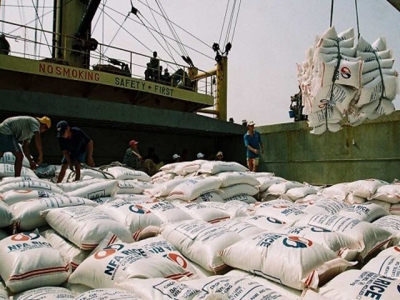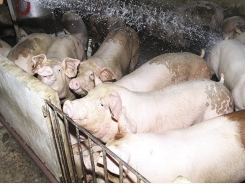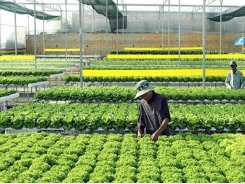Making efforts to boost rice exports

According to the Ministry of Agriculture and Rural Development, in the first quarter of 2019, Vietnam's rice export volume was estimated at 1.43 million tonnes, worth US$ 593 million, down 3.5% in volume and 20.2% in value over the same period in 2018.
The average export price of rice in the first two months of the year only reached US$404 per tonne, down 17.8% compared to the same period in 2018. Difficulties in exporting rice in the first quarter have dragged down the price of rice in the Mekong Delta, especially in February, 2019, when entering the harvest of winter-spring rice.
Part of the reason for the decline in the volume of exported rice is due to the fact that the first few months of the year coincide with the Lunar New Year, plus domestic enterprises have not promoted delivery and traders who buy rice have not begun to trade yet. On the market side, in the early months of 2019, some countries still have surplus rice from 2018, so they have no demand for import which in turn makes the market less active.
In addition, China, one of Vietnam's major rice import markets for many years, has now reduced their rice purchases, which has had a relatively large impact. At the same time, measures to closely control food safety and hygiene for imported rice have been strengthened and there are more stringent regulations on the supervision and management of imported goods. Until now, only 21 Vietnamese enterprises are allowed to export rice to the Chinese market. The reduction of export indications has led to a sharp decline in rice export volume.
For other traditional markets such as the Philippines and Indonesia, Vietnam is also facing difficulties in boosting rice exports to these markets. Specifically, the Philippines is seeking to expand its rice supply by signing more memorandums of cooperation with Pakistan and Myanmar. Meanwhile, Indonesia has also restricted imports because the country's reserved rice is still sufficient until the end of the second quarter of 2019.
Facing the above situation, it is necessary to strengthen solutions to maintain traditional markets and penetrate new markets. Specially, it is necessary to pay attention to exporting high quality rice and specialty rice instead of white rice as before.
In addition, localities need to accelerate the effective implementation of the restructuring scheme of the rice industry, because the competition for rice quality is becoming a real "war" when the rice of some other countries in the region are constantly increasing competition for Vietnamese rice in terms of quality, value and ways of promoting their image. Therefore, in addition to improving quality, strengthening the promotion of rice trade in markets, and the promotion and image building for Vietnamese rice also are very important, therefore businesses and authorities should pay greater attention to these requirements. After building an image of high quality rice seeds with competitive prices, the export to fastidious markets will certainly become more open, creating new markets to stabilise the volume and turnover value.
Related news
Tools

Phối trộn thức ăn chăn nuôi

Pha dung dịch thủy canh

Định mức cho tôm ăn

Phối trộn phân bón NPK

Xác định tỷ lệ tôm sống

Chuyển đổi đơn vị phân bón

Xác định công suất sục khí

Chuyển đổi đơn vị tôm

Tính diện tích nhà kính

Tính thể tích ao



 Trends, branding paramount for agricultural exports to Europe
Trends, branding paramount for agricultural exports to Europe  Da Lat’s farms turn modern in Industry 4.0
Da Lat’s farms turn modern in Industry 4.0